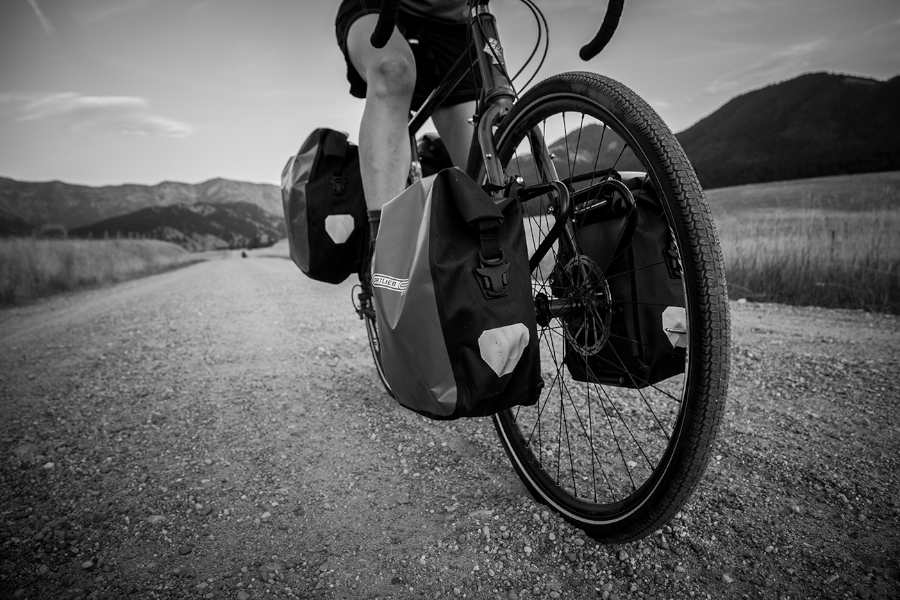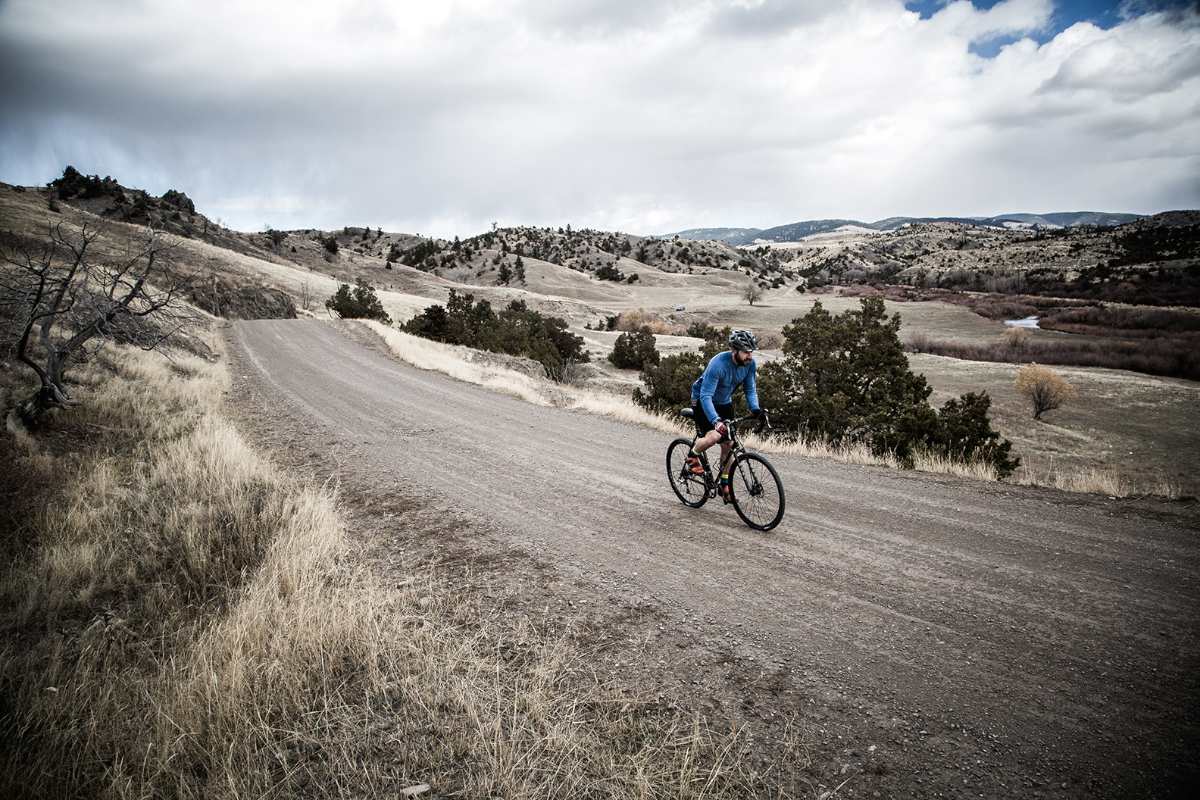Welcome to Tire Tech, Bikerumor’s new mostly-weekly series on bicycle tires. Like our Suspension Tech and AASQ series, we want to hear from you so we can get answers to the questions you have about tires, whether it’s road, cyclocross, fat, plus, gravel, or mountain bike.
In our first installment of Tire Tech we discussed proper air pressure for mountain bike tires. If control is the end game on singletrack, riders on the road crave speed and efficiency. No rider wants to waste a watt, but how much pressure is ideal for pavement and gravel riding?
The Trickery of Perceived Speed

For years the formula was easy — inflate your tires to the max limit and ride away. It wasn’t very scientific, but our collective impressions led us to believe rock-hard tires equalled a fast roll. To put it plainly, we were all wrong! The sensation we felt wasn’t sweet velocity, it was little more than amplified vibrations transmitted through the bike. As those vibration frequencies increased, our perception of speed did as well. We may have duped ourselves, but we had help from throughout the industry.
At the same time we were bouncing down the road on our overfilled tires, many of the leading manufacturers were creating simulated tests to measure rolling resistance. Even today most of those tests use a steel drum to replicate the road surface. As air pressure is increased rolling resistance values typically go down. But even thorough testers like Jarno Bierman of Bicycle Rolling Resistance agree, there is a tipping point whereby a rougher surface will not benefit from higher tire pressures.
In recent years a number of studies have been performed in real-world settings comparing a wide range of variables. Those tests have pitted riders against cobbles, chip-sealed roads, dirt corrugations, and other surfaces far more textured than any steel drum. The results have created a sea change in how road-biased riders approach the pump. Riders are now pushing the lower limits of PSI in an effort to bolster comfort and performance. Gravel riders, the close cousin to the mountain biker, made the change quickly. Road purists have been a little slower to make the leap.
Tire Pressure and the 15% Drop

One of the first bike scientists to delve into tire pressure was Frank Berto. In the 1980s he deduced that all tires — regardless of volume, material, or size — were at their optimum with 15% loaded compression in the sidewall. This footprint not only allowed for the ideal amount of shock attenuation, but it it afforded good braking and cornering traction. He claimed that this small 15% of sidewall flex garnered all of the positive benefits of a pneumatic tire without incurring the excessive hysteretic flexing losses of under-inflation.
The most important aspect of a tire’s compression is the ability to absorb irregularities in the road surface. By enveloping minor imperfections the wheel rolls forward with no loss of forward energy and doesn’t deflect, bounce, or chatter. If you have ever plowed over corrugations in a dirt road with over-inflated tires you know how hard it is to maintain speed. As general rules go, Berto’s drop seems to have survived the test of time, but it’s virtually impossible to accurately gauge 15% of squish in a tire sidewall.
How Much Tire Pressure is Enough?

Ask a tire pressure guru how much air is best and they’ll say “Not too much, but not too little, either.” Only time and experience can serve as your guide. You will have to carefully evaluate your tire width and consider the load on the tires to gain the ideal amount of tire deformation. Wet or slick surfaces will especially benefit from lower pressures and more meat on the ground. A freshly paved road with a glass-smooth, marble-like surface will benefit from higher PSI. Like everything in life — it is a balance. If you go too low you run the risk of a rim impact and the damage that goes with it. A soft tire also squirms in turns, and that excessive flex can prematurely wear the treads and sidewall.
The negatives at the upper reaches of PSI are less obvious, but usually manifest themselves in the form of rider fatigue, compromised braking, and less cornering control. Although it might feel faster, don’t be fooled — higher pressure usually isn’t.
What About Tubeless Tires?
Tubeless tires let you go lower without the risk of pinch flats. But unless you’re hopping curbs or there are serious potholes in your route, going low enough to increase the risk of pinch flats might be a little too low for confident handling anyway on pavement. For gravel, where tubeless is taking hold more quickly, it’s a balance between soaking up the bumps and preventing tire squirm in the corners.
But make small adjustments to find the right spot for you and your riding conditions. Tire pressure changes in a higher volume 700×40 tire will be more noticeable than in a 700×25 because of percentages. On a bigger volume tire, you might be maxing out at 55psi, so reducing it to 50psi is a ~9% change. On a road bike, you might be maxing at 100psi, so dropping it 5psi is a 5% change. If you’re a mountain biker, too, and have been riding plus or fat bikes, you know this all too well…1-2psi changes can make or break a tire’s performance there!
The takeaway is this: There are simply too many variables (rim width, tire width, rider weight, surface conditions, etc.) to make any hard and fast rules. But, try running a little bit lower pressure and see how you feel. Do you feel fewer vibrations? Do you feel fresher after a long ride? Do you have more traction and control? Or are you squirming around or bottoming on the rim? Make notes on your phone until you get it dialed, because going from memory — ride to ride just doesn’t work out IRL. Pro Tip: Once you find the right tire pressure for your set up, use a silver Sharpie and write it on the tire’s sidewall near the valve stem. (Oh, and most likely, you never need to get anywhere close to the max pressure rating stamped on the sidewall.)
This Episode presented by Terrene Tires. At Terrene, we put riding at the center of the experience. We understand what matters most—be it an afternoon on your favorite stretch of singletrack, a long day on an unending dirt road, or a worldwide tour. We took what we have learned through decades in the bicycle industry to bring you tires that are designed to ride how you do. From the very beginning of the process until the tread hits the dirt, we bring together our experience in product development and a passion for riding to create tires that are ready to ride for people that live to.
Pumped on this? Got a question you want answered? Email us. Want your brand or product featured? We can do that, too.

